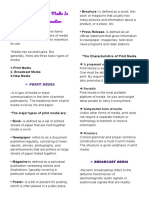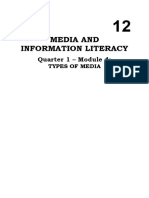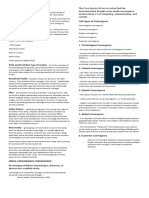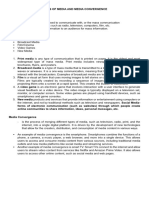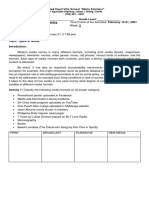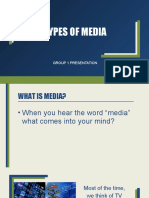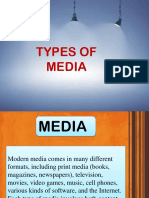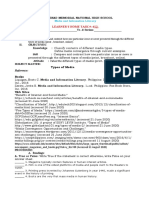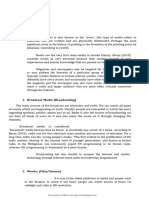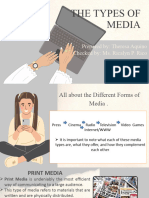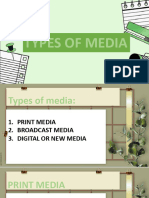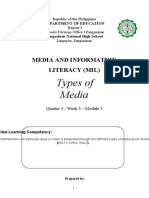0% found this document useful (0 votes)
1 views1 pageMIL Week 5
The document outlines four main types of media: Print Media, which includes traditional formats like newspapers and magazines; Broadcast Media, encompassing radio and television; Film/Movies, which have evolved from theaters to home viewing; and New Media, characterized by digital content and interactivity. It also discusses media convergence, the merging of various media outlets and technologies into a unified platform to enhance user experience. This convergence reflects the transition into a digital age where media industries are adapting to new technologies.
Uploaded by
aristotlecrisanto926Copyright
© © All Rights Reserved
We take content rights seriously. If you suspect this is your content, claim it here.
Available Formats
Download as PDF, TXT or read online on Scribd
0% found this document useful (0 votes)
1 views1 pageMIL Week 5
The document outlines four main types of media: Print Media, which includes traditional formats like newspapers and magazines; Broadcast Media, encompassing radio and television; Film/Movies, which have evolved from theaters to home viewing; and New Media, characterized by digital content and interactivity. It also discusses media convergence, the merging of various media outlets and technologies into a unified platform to enhance user experience. This convergence reflects the transition into a digital age where media industries are adapting to new technologies.
Uploaded by
aristotlecrisanto926Copyright
© © All Rights Reserved
We take content rights seriously. If you suspect this is your content, claim it here.
Available Formats
Download as PDF, TXT or read online on Scribd
/ 1










